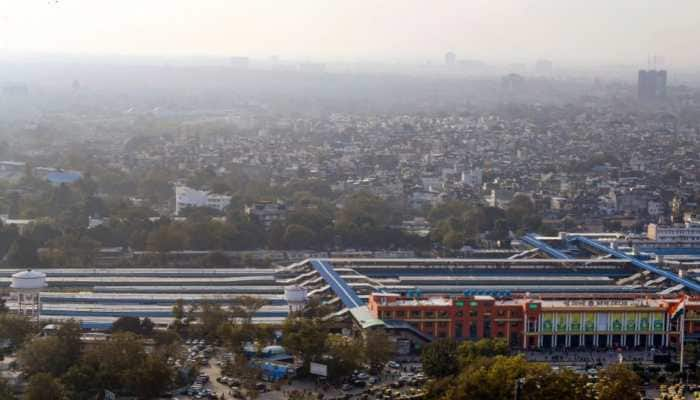Study sheds light on culinary habits of Stonehenge builders
People who built Stonehenge, the iconic prehistoric stone monument in the UK, organised large-scale feasts, where animals were brought from all over Britain to be barbecued and cooked in open-air mass gatherings, a new study suggests.
Trending Photos
)
London: People who built Stonehenge, the iconic prehistoric stone monument in the UK, organised large-scale feasts, where animals were brought from all over Britain to be barbecued and cooked in open-air mass gatherings, a new study suggests.
The study provides insights into cuisine choices and eating habits at Durrington Walls - a Late Neolithic monument and settlement site thought to be the residence for the builders of nearby Stonehenge during the 25th century BC.
A team of archaeologists at the University of York with researchers at the University of Sheffield conducted a detailed analysis of pottery and animal bones to uncover evidence of organised feasts featuring barbeque-style roasting.
Chemically analysing food residues remaining on several hundred fragments of pottery, the York team found differences in the way pots were used.
Pots deposited in residential areas were found to be used for cooking animal products including pork, beef and dairy, whereas pottery from the ceremonial spaces was used predominantly for dairy.
Such spatial patterning could mean that milk, yoghurts and cheeses were perceived as fairly exclusive foods only consumed by a select few, or that milk products were used in public ceremonies, researchers said.
Unusually, there was very little evidence of plant food preparation at any part of the site. The main evidence points to mass animal consumption, particularly of pigs.
Further analysis of animal bones, conducted at the University of Sheffield, found that many pigs were killed before reaching their maximum weight. This is strong evidence of planned autumn and winter slaughtering and feasting-like consumption.
The main methods of cooking meat are thought to be boiling and roasting in pots probably around indoor hearths, and larger barbeque-style roasting outdoors - the latter evidenced by distinctive burn patterns on animal bones.
Bones from all parts of the animal skeleton were found, indicating that livestock was walked to the site rather than introduced as joints of meat. Isotopic analysis indicates that cattle originated from many different locations, some far away from the site.
"Evidence of food-sharing and activity-zoning at Durrington Walls shows a greater degree of culinary organisation than was expected for this period of British prehistory," said Dr Oliver Craig, Reader in Archaeological Science at the University of York.
"The inhabitants and many visitors to this site possessed a shared understanding of how foods should be prepared, consumed and disposed. This, together with evidence of feasting, suggests Durrington Walls was a well-organised working community," he said.
Stay informed on all the latest news, real-time breaking news updates, and follow all the important headlines in india news and world News on Zee News.
Live Tv







)
)
)
)
)
)
)
)
)
)
